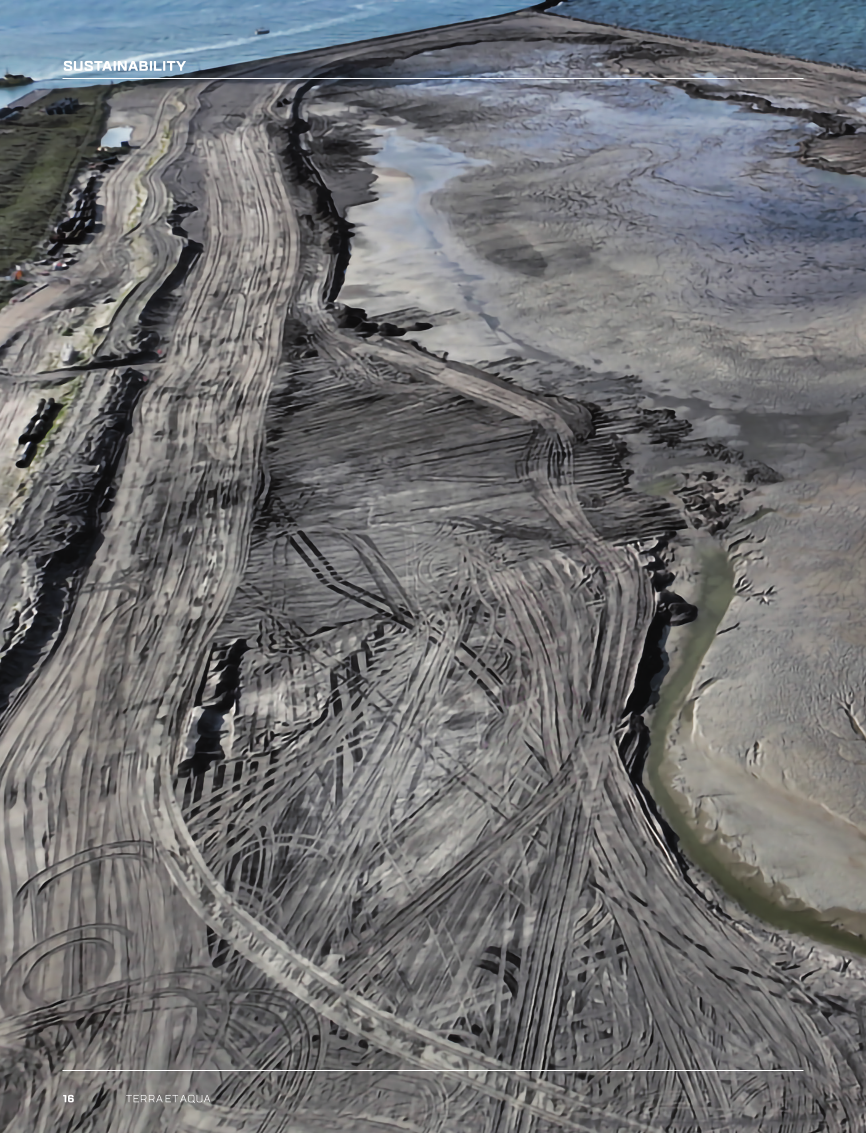
Unsuitable to suitable: a change in the reclamation design paradigm
The availability of suitable sand has become a limiting factor in the development of many ambitious reclamation projects, making the reuse of existing, less suitable materials a critical solution. This subject has been given broader international attention in the past years driven by the shortage of sand resources and by the desire for a more circular society where waste does not exist. So far, only a few examples exist of islands that have been constructed with fine silty or even clayey sediment. In this context, the reclamation with sediments must evolve from an exceptional case requiring special considerations, to a common practice. To favour this practice, an integrated framework is needed where the concepts of suitable and unsuitable are redefined.
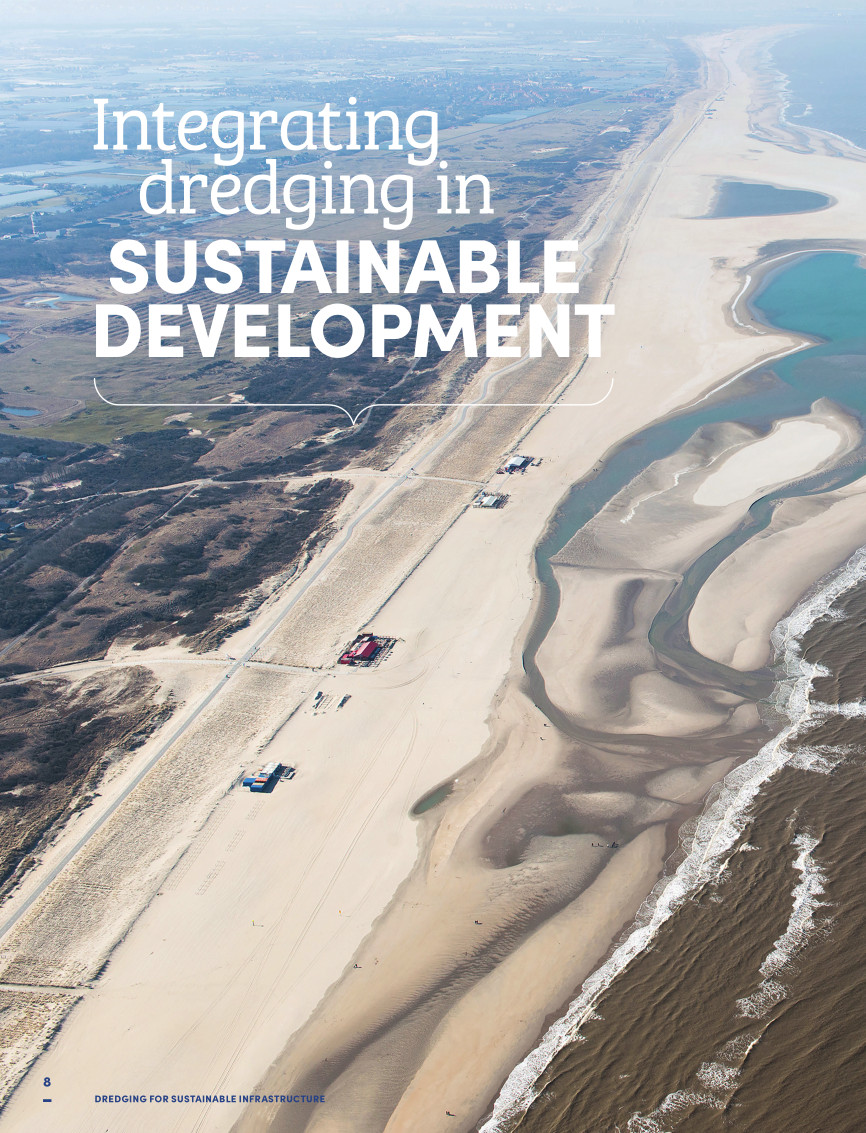
INTEGRATING DREDGING IN SUSTAINABLE DEVELOPMENT
Adapted from the second chapter of Dredging for Sustainable Infrastructure (2018), this article forms the foundation for this first issue and presents the concept of sustainability in relation to dredging projects. It describes the approaches and practices that are key to creating more sustainable solutions and infrastructure – a modern way of thinking about dredging.
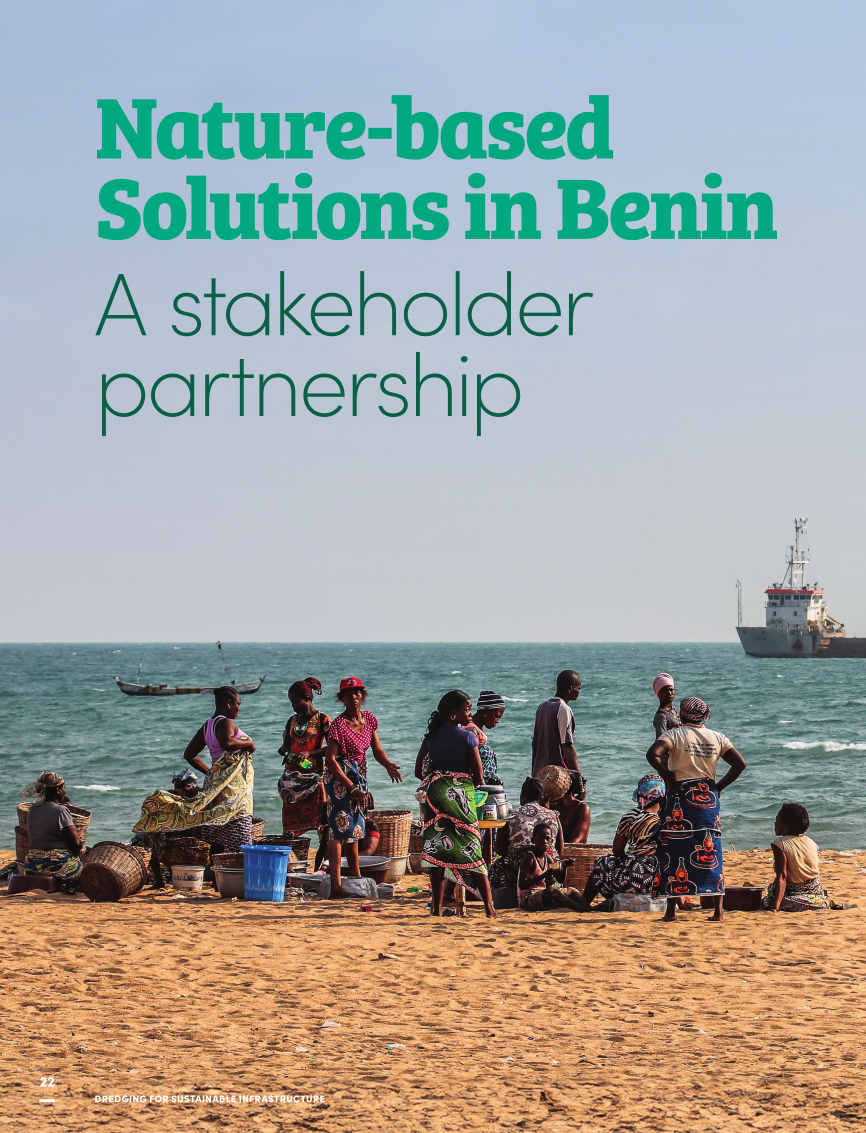
NATURE-BASED SOLUTIONS IN BENIN
In early 2018, the Government of the Republic of Benin awarded Jan De Nul a design and build contract to protect a 5-kilometre-long stretch of coastline near the town of Avlékété. The project fits into the government’s plan to turn the local coastal zone, which includes a lagoon, sandspit and beaches, into tourist hotspots. Yet the persistent oceanic swell and chronic erosion required an intervention. This is the perfect starting point for a nature- based structure that offers multiple ecosystem services. Its long-term effectiveness, however, hinges on the support of its end users. Stakeholder engagement was therefore central to the project.
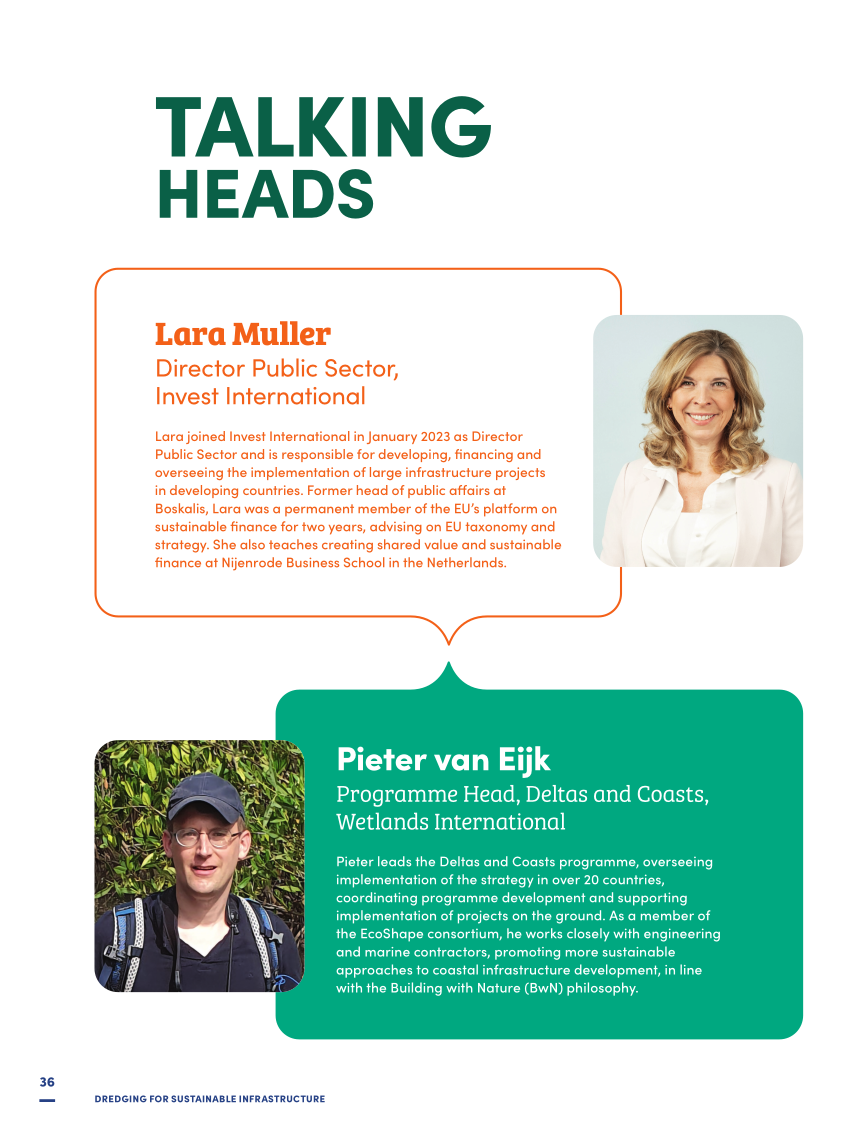
TALKING HEADS
Lara Muller (Invest International) and Pieter van Eijk (Wetlands International), discuss the role investors and NGOs can play in driving demand for nature-based solutions.
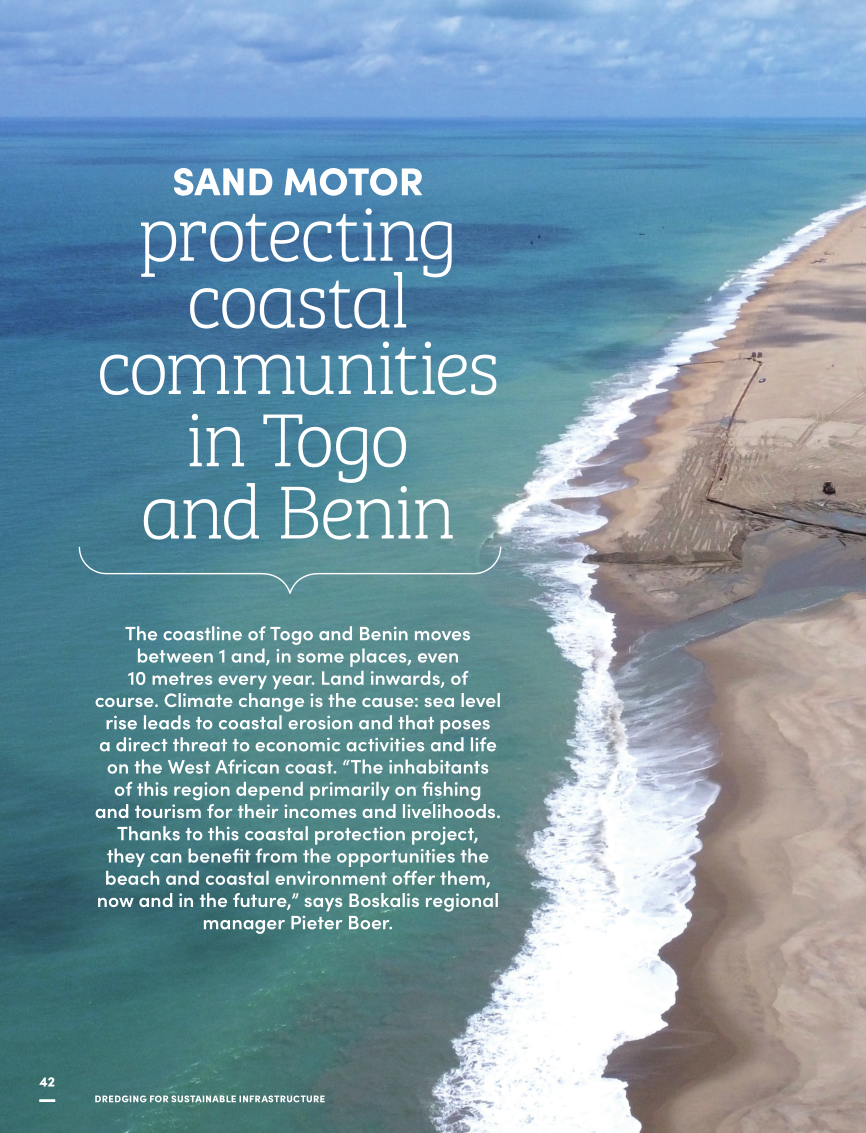
SAND MOTOR PROTECTING COASTAL COMMUNITIES IN TOGO AND BENIN
The coastline of Togo and Benin moves between 1 and, in some places, even 10 metres every year. Land inwards, of course. Climate change is the cause: sea level rise leads to coastal erosion and that poses a direct threat to economic activities and life on the West African coast. “The inhabitants of this region depend primarily on fishing and tourism for their incomes and livelihoods. Thanks to this coastal protection project, they can benefit from the opportunities the beach and coastal environment offer them, now and in the future,” says Boskalis regional manager Pieter Boer.
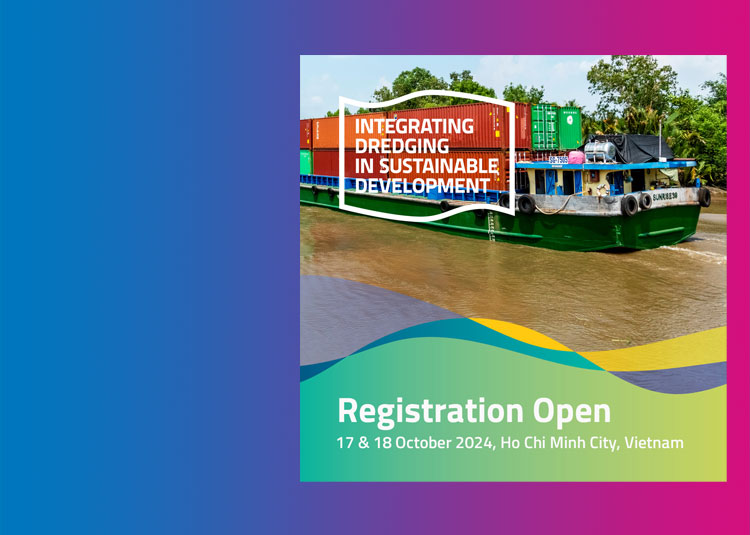
Registration open! 18 October, Ho Chi Minh City, Vietnam
Registration open! IADC and PIANC organise a one-day conference in Ho Chi Minh City, Vietnam on 18 October.

New paper: Integrating dredging in sustainable development
Based on the Dredging for Sustainable Infrastructure book, IADC publishes a paper on Integrating dredging in sustainable development which is based on the book.

Integrating dredging in sustainable development
The paper Integrating dredging in sustainable development outlines the philosophy and concepts of sustainability and its application to water infrastructure projects focusing on practical issues for dredging.

